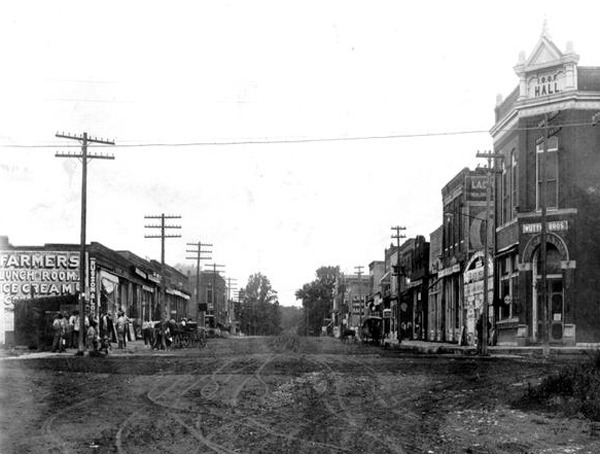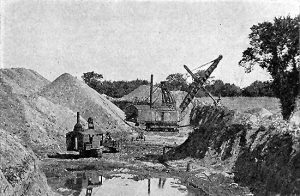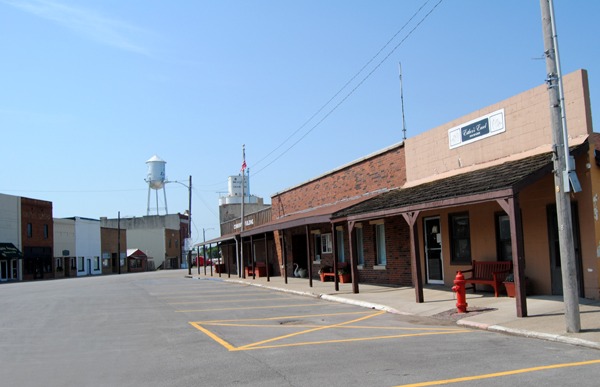
La Cygne Kansas
Situated along the Marais des Cygnes River in the northeast part of Linn County, La Cygne (pronounced ‘luh SEEN’) got its start in 1869 when it was determined that the Kansas City, Fort Scott, and Gulf Railroad would come through the area. It was named after the Marais des Cygnes River, which means “Marsh of the Swans” in French, and it was about the Trumpeter Swan, which was historically common in the Midwest. Before a townsite was even laid out, a man named Mr. Chetland built the town’s first store.
Shortly afterward, a town company was organized and purchased 1,400 acres of land, but only 140 acres were used to lay out the townsite. A man named S.D. Cady soon erected a dry goods store; W.A. Jones started a hardware store; Lyman Dearborn, a furniture store; George J. Miller, a produce and grocery store; and J.A. Walker built the first hotel called the Walker House. La Cygne’s first post office opened on September 27, 1869.
Mrs. Webb taught the first private school in Cady’s Hall, which continued until a public schoolhouse was built the following year. Several residential homes were also built that first year, including one by Henry Briser, Dr. A. Davis, B. S. Heath, and others.
La Cygne was incorporated as a village in January 1870, and a board of trustees was appointed. Before long, Joseph Goss completed a second hotel, the La Cygne House. Chatterson & Hungerford established the La Cygne Flouring Mill, and S. D. Cady started a bank called the Farmers’ Savings Bank. The first newspaper in the town was the Weekly Journal, which first appeared in June 1870. It would change hands several times through the years and continue publication until 1915.
A Methodist Church was organized and soon after built a 24×50′ frame building for services. The Presbyterians also organized in 1870 but would not have a church until the following year. By the fall of 1870, the town had grown enough that La Cygne had enough residents to organize as a city of the third class, and F. A. Foote was elected the first mayor. At about the same time, a public schoolhouse was built.
In 1871, J.J. Starks erected the first brick building in the town, which held a dry goods business. A bank was established the same year. A new larger school was also built at the cost of $10,000. The two-story brick schoolhouse accommodated grade school through high school students. The Presbyterians completed a 28 by 44 foot frame building in the fall. That same year, the stock was organized in S.D. Cady’s Farmers’ Savings Bank and a brick building were built. Three years later, in 1874, it would change names, become S. D. Cady & Co., and later change again to the Linn County Bank. It continues to operate today. Shortly after the Farmers’ Savings Bank was established, Bentley, Pratt & Moore started a private bank, which would operate until 1879, when it was discontinued.
In 1872, several citizens, acting on the advice of an area Indian chief, formed a company to look for silver. The Indian, who said he had received the information through a “spirit,” directed them to a place that took on the name of “Silver Mound.” About $3,000 was spent to sink a 100-foot shaft, but no silver was ever found, and the project was abandoned. Another man, who was sure that lead could be found in the area, spent some $15,000 in a fruitless search for lead in Potosi Township.
In 1880, the flour mill became the property of D. Coonrad. By this time, the mill was three stories high. Two years later, the mill was updated with “patent process” machinery and would process 80 barrels of flour daily. That same year, the La Cygne Organ Factory was established by Swisher & Shrake, who manufactured reed organs on a small scale.

Linn County Coal Mine
In 1881, several La Cygne citizens raised $1,000 and hired a man named George Morely, a practical miner, to sink a shaft searching for coal. This first shaft, located ½ mile north of town, resulted in locating an excellent 36-inch vein of coal. George Morely and S.D. soon organized a mining company. Cady, which purchased considerable ground. By 1882, Cady, who had earlier established the first store in La Cygne and the Linn County Bank, became the sole proprietor. More shafts were sunk, with similar positive results. Today, coal is still mined at the La Cygne Generating Station to the east of the city.
Late in the fall of 1882, a destructive fire occurred in La Cygne, burning several business buildings on the west side of Broadway Street from Market to Walnut. Several businesses were destroyed, including a real estate office, harness shop, billiard hall, dental office, restaurant, and more. More businesses suffered some damage without being destroyed.
By 1910, La Cygne was called home to 957 people and featured several business blocks and beautiful homes.

La Cygne today
Over the years, La Cygne has remained a small agricultural community that boasts about 1,100 people today. Linn County Park on Lake LaCygne offers superb fishing, camping facilities, wildlife viewing, and other recreational activities. The La Cygne Historical Society, located at 310 N Broadway, is open on weekend afternoons for those searching for more historical information about the area. The Marais des Cygnes Massacre Historic Site is located 5 ½ miles northeast of Trading Post on Highway 69.
La Cygne is located four miles west of U.S. Highway 69 on Kansas Highway 152.
More Information:
City of La Cygne
P.O. Box 600
206 Commercial
La Cygne, Kansas 66040
©Kathy Alexander/Legends of Kansas, April 2024.
Also See:
